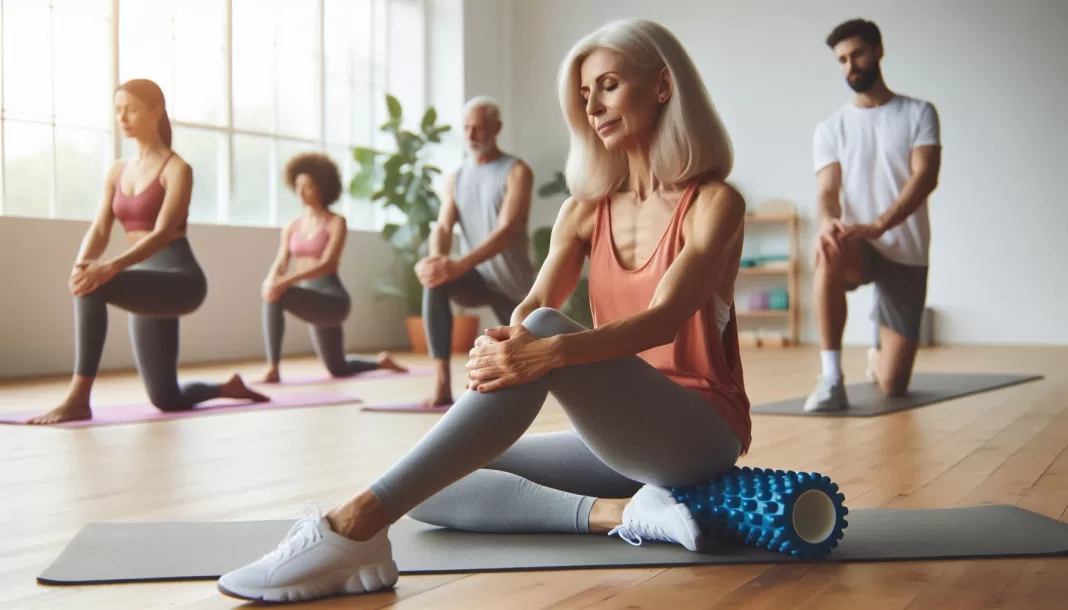When you have knee pain, walking may be the last thing on your mind. However, Moving and taking a walk can be one of the best options to relieve discomfort.
There are several causes associated with chronic pain and inflammation in this joint. Obesity, trauma, sports injuries and osteoarthritis are the most common.
In these contexts, Staying active is key to managing discomfortBut there are some precautions you should take into account so that exercise relieves symptoms and does not worsen the situation.
The benefits of walking when your knees hurt
Moving your knee helps maintain its functionality. There are several benefits to walking when you have pain.
Muscle strengthening
Walk regularly helps to strengthen the muscles surrounding the knee, especially the quadriceps and hamstringsThese structures help stabilize and support the forces that act on the joint, which can reduce pain and prevent further injury.
Strong muscles absorb impact better and reduce the direct load on the knees. This reduces wear on the internal cartilage.
Improving flexibility
Gentle, repetitive walking movements can improve the joint mobility and reduce stiffness. This contribution is very beneficial for those who suffer from osteoarthritis, since the lack of movement aggravates joint inflexibility and increases pain.
Walking stimulates the production and circulation of synovial fluid, which nourishes the articular cartilage. In this way, lubrication reduces friction between the bones.
Weight control
Maintain a healthy body weight decrease the load on the knees. Every additional kilogram on the body puts significant pressure on the joints, increasing pain and cartilage degeneration.
Walking at a moderate or intense pace is an action that burn calories Over time, this can translate into considerable weight loss, especially if combined with a balanced diet.
In addition to relieving pressure on your knees, reaching a healthy weight can also reduce inflammation It is a positive side effect of physical activity.
Reduction of cardiovascular risk
Osteoarthritis (OA) and cardiovascular disease (CVD) share risk factors common, such as age and high body mass index. Also, the disability caused by knee OA is associated with high blood pressure, diabetes and heart problems.
Walking is a low-impact form of cardiovascular exercise. Improves blood circulation and promotes the proper functioning of the heart.
Better blood flow ensures that all tissues in the body receive sufficient oxygen and nutrients, including the knees. This could speed up recovery and reduce inflammation. In particular, because it promotes the production of more synovial fluid, which is the lubricant of the joint.
Preventing chronic pain
Walking can be beneficial for those with chronic knee problems. According to a scientific study published in the journal Arthritis & Rheumatology People who walk regularly are 40% less likely to develop frequent and repetitive joint pain.
In addition, the same research found that walking helps preserve the space between the bones of the knee joint. This would limit the structural damage caused by osteoarthritis.
What to consider when walking with knee pain?
Even if the pain motivates you to stay still, Walking regularly and safely can relieve your discomfort. However, and especially if you have osteoarthritis, it is important to follow some considerations to minimize the possibility of causing damage with movement.
Choose the right surface
Choose to walk on natural terrain, such as dirt or gravel. They are gentler on your joints than concrete or asphalt. Softer surfaces help reduce pressure on your knees.
Also, choose a route without steep descents or climbs. Flat terrain will prevent you from overexerting yourself unnecessarily.
If you opt for one treadmill make sure it has an adequate shock absorption system. Check this in the “cushioning” section of the instruction manual.
Wear appropriate footwear
Choose a pair of sneakers and insoles that provide good support and cushioning. These shoes should be flat, flexible, able to bend at the front and with a slight drop from heel to toe. The design should allow the foot to move naturally.
Check in specialized stores to find the most suitable option, as there are Footwear designed to reduce pain from knee osteoarthritis Avoid going out for a walk in high heels or very worn-out sneakers.
Get ready and warm up
Before going out for a walk, it is advisable warm up the body to increase blood circulation. In this way, you will gradually reduce stiffness and pain and prepare your body for movement.
Start with some gentle exercises. Applying heat to your knees before walking can also be beneficial.
Move forward little by little
If you are just starting out with the activity or if your knee pain is very intense, Take short, easy-paced walks at first. Over time, you will be able to increase the duration and intensity.
Break up your walk into 10- or 15-minute segments, 2 or 3 times a day, rather than doing one 30-minute outing. This can help limit pain.
Now, how much distance should you cover? A scientific study found that people with knee pain from osteoarthritis benefit most when walk 6000 steps or more per day. Try to reach that goal and monitor it with the step counters in mobile applications.
Lose weight
If you are overweight, Losing a few pounds can take the pressure off your knees and help you get through your hikes. The combination of physical activities and a low-calorie diet will bring well-being to your joints.
Use walking sticks
The canes of trekking or of Nordic walking They can provide additional stability and reduce the load on the knees. They are especially useful if you want to cover longer distances.
Attend to the pain
Being aware of your sensations will help you adjust your routine as needed. You may already know that osteoarthritis pain can vary from day to day.
You can modify your physical activity program if you feel too much pain. Similarly, if you feel very intense discomfort while walking, it is best to stop.
For days when you don’t walk, you may want to consider other alternatives. Consider the cycling or water exercises, which offer similar benefits without putting as much pressure on the knees.
If the pain disappears with rest, you can resume your exercise in the following days. However, if the pain does not go away despite being still, consult your doctor.
Take time to recover when you finish
When you finish your walk, spend a few minutes cool your body. Perform gentle stretches to keep joints flexible and prevent stiffness.
Applying cold compresses to your knees can help reduce inflammation and pain. This is especially helpful if you experience any discomfort after exercise.
When to walk?
Choosing the right time of day allows you to take full advantage of the relief that exercise provides:
- After taking anti-inflammatory medications. You can take advantage of their effects and walk after taking them.
- When you feel your joints are less stiff. If you notice that your pain and fatigue decrease at a specific time during the day, that would be a good time to take the walk.
- If the pain is limited to the morning or afternoon. If you wake up with stiff knees, it’s best to wait until later to go out. On the other hand, if the stiffness increases as the hours go by, plan your schedule to walk in the morning.
Avoid walking during times of intense pain. Instead of going outside, move your joints at rest to try to relieve symptoms.
Find a comprehensive approach to your pain
Before start a new physical activity routine especially if you have been diagnosed with osteoarthritis, It is essential to talk to a doctor. While walking is beneficial for many, each case is unique and may require a personalized approach.
It’s also important to stay active throughout the day. Don’t limit yourself to just walking; incorporate regular movement and stretching into your daily activities.
While walking will help reduce discomfort and decrease stiffness, it may not always be possible to do so. So you would need to learn other methods exercises to relieve knee pain.
Maintaining regular physical activity can be difficult. There will be days when you lack motivation. To improve adherence, patient exercise classes and programs, which are available at local parks and community centers, are a great help. With the right advice and a support network, you can manage your discomfort and enjoy an active life.













